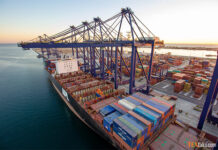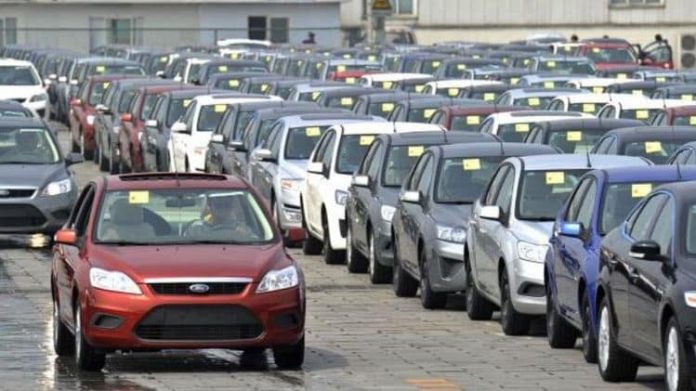Unable to meet goals for localisation and export quotas, the Ministry of Industries and Production has sheepishly asked the government to delay their auto policy outcome targets by a year for the automotive industry.
So what gives?
Introduced in 2021, the Auto Industry Development and Export Policy 2021-26 (AIDEP) had set ambitious targets for the auto industry to both improve its localisation rates and also start exporting. Under the policy incentives given to local assemblers of cars in Pakistan would be ended and new players would be given an open playing field. However just two years into the policy it seems the ministry responsible for it is already giving up.
A history of bad 5-year plans
Pakistan has long had a problem in its auto industry. Not only do we not make our own cars, we do not even make any parts for the cars that are assembled here. All of the parts are imported from abroad and assembled in Pakistan. This behaviour was long encouraged by the government which gave the industry incentives and allowed major players to cement their place and not allow new entrants into the market.
Over the past two decades, attempts have been made to remedy this through five year auto policies. The core objective of 1st policy was to protect localization, as stakeholders were apprehensive of localization rollback due change in policy regime from mandatory localization to tariff base economic localization. The policy interventions made in 2006 did serve the purpose to safeguard the local investment.
However, the second policy AIDP for the period from 2011-2016 did not achieve its objective of ‘increasing competition’. In the same policy period, the SRO 499(I)/2013 provided CBU concession to HEV CBUs since 2013, which has continued till date. This means that essentially instead of promoting localisation the import of entirely assembled cars was promoted. Similarly, the 3rd policy ADP 2016-21 comparatively was successful to achieve its core objectives of increasing competition. However, the new investment is concentrated in the upper segment and SUV category only. It did not go well for lower segments.
In 2021, the government gave the 1st ever incentive for new technologies such as HEVs and BEVs. The CKD HEV incentive announced in 2021 in Pakistan, it was the time to mainly attract investment and technology upgrades in the local vehicle manufacturing.
What is going on now?
The Engineering Development Board (EDB), an offshoot of the Ministry of Industries and Production (MoIP), has issued a fervent plea to the central government. The plea? To delay the obligatory export quota by a year from 1 July 2023. In addition, it has proposed a one-year postponement of the mandatory localisation deadline. The goal? To provide a lifeline to the automotive sector, enabling it to bolster its operations and supercharge its production capacities.
This proposition by the MoIP follows a startling revelation at a meeting convened to finalise a draft summary for the Economic Coordination Committee (ECC) regarding potential amendments to the auto policy. Contrary to the MoIP’s assertion of attracting new entrants to the industry, recent documents disclose that the sector has failed to meet the export and localisation targets set by AIDEP. In an unforeseen turn of events, the local automotive industry has fallen short of expectations.
The MoIP has advocated for refraining from enforcing compliance or imposing penalties. However, according to documents, not all stakeholders concur with the MoIP’s suggestions. The Ministry of Science and Technology, Ministry of Commerce and some other parties have opposed this proposal, emphasising the need to maintain focus on export objectives and indigenisation while preserving policy consistency.
The Ministry of Industries and Production’s justification
According to the ministry, AIDEP has attracted substantial investments, particularly in the production of hybrid vehicles and the anticipated launch of smaller CC vehicles and electric 2-3 wheelers. To date, 26 manufacturing licences have been granted under AIDEP, which also includes investor facilitation and the execution of the Automotive Development Policy (ADP 2016-21). The ADP ushered in eight new international car manufacturers into the Pakistani market. However, the sector has been beset by supply chain disruptions, reduced output, and high non-production days due to unfavourable economic conditions and LC restrictions, which have adversely affected the sector.
The MoIP has also observed that whenever a new part or component is introduced, it becomes subject to higher tariffs without allowing sufficient time for localisation.
Despite various interventions approved under AIDEP and ADP, several issues have emerged during implementation. The MoIP notified a mandatory export target of 2% starting from the fiscal year 2022-23, with a 2 % annual increase, reaching 10% of the Cost & Freight (C&F) value of imports by the end of the fiscal year 2025-26, on March 1, 2022. However, achieving the export targets seems increasingly unfeasible. Why is that?
In light of these challenges, the ministry has proposed deferring the mandatory requirement to achieve export targets for an additional year. The fate of this proposal now rests in the hands of the Economic Coordination Committee (ECC), as stakeholders continue to grapple with the delicate balance between industry support and policy compliance.
The ministry has suggested that the compulsory export target of vehicles be postponed for one year from July 1, 2023. Furthermore, they have proposed that the federal government consider a one-year deferment of mandatory localisation implementation to support the automotive industry in stabilising operations and enhancing production capabilities.
The problem at hand
This isn’t the first instance of such a proposal encountering opposition. In a previous meeting on September 12, the notion of extending the timeline for meeting policy targets was largely contested. Critics have contended that the EDB’s partiality towards auto firms has come at the expense of the populace, who are left with no alternative but to purchase vehicles from local manufacturers and assemblers.
Furthermore, it was resolved that as part of AIDEP, the incentives provided to new entrants under ADP 2016-21 were to persist for five years from the issuance of the manufacturing certificate or until 30th June, 2026, whichever is earlier as stipulated in the ADP 2016-21. The primary bone of contention in terms of the incentives was that numerous automotive manufacturers were granted concessional tariffs for imported parts in order to expedite production, diminish the barriers to entry erected by incumbents, and assist in localisation.
However, the absence of exports in any significant capacity to offset the additional foreign exchange drain exacerbates Pakistan’s perpetually concerning balance of payments situation.

























Excellent written Ghulam Abbas
Pathetic language.
I have seen some great stuff here. Worth bookmarking for revisiting. I surprise how much effort you put to create such a great informative website. Your work is truly appreciated around the clock and the globe.